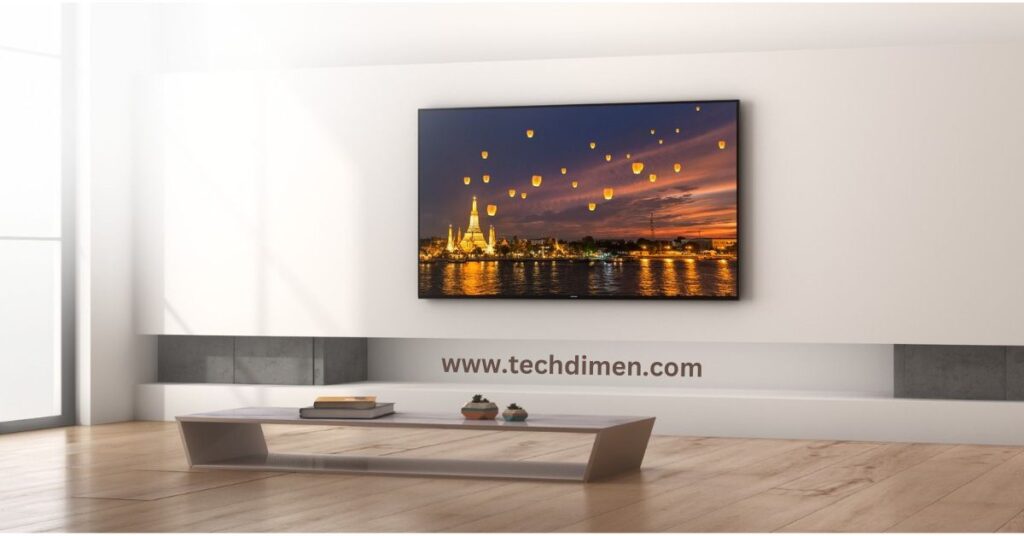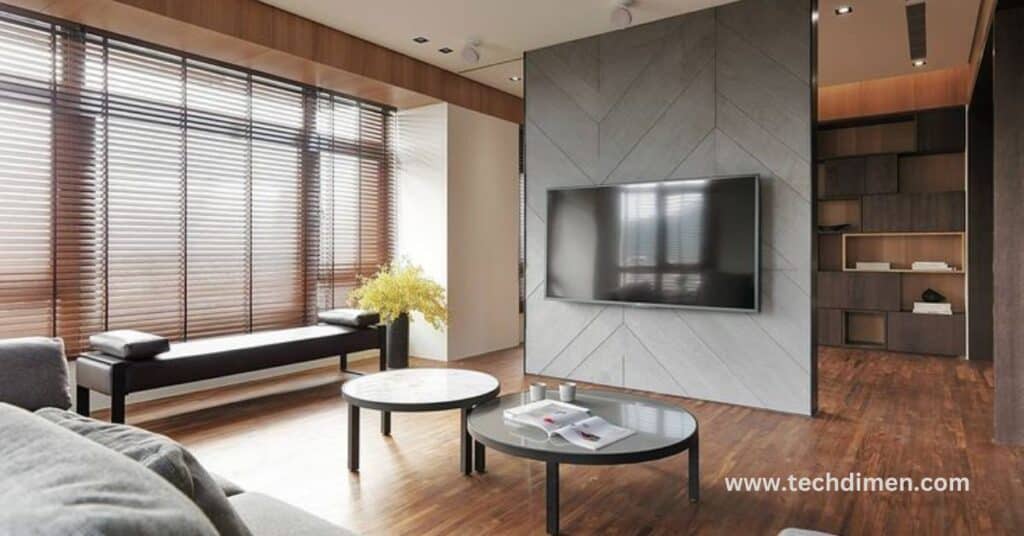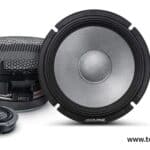When you’re shopping for a Wide 50 Inch TV, it’s crucial to understand more than just the advertised screen size. A TV’s width, height, and depth can significantly impact your room setup, stand selection, and overall viewing experience. This guide will break down everything you need to know about the Wide 50 Inch TV dimensions, with clear facts and expert advice to help you make an informed decision.
How Wide Is a 50 Inch TV? Complete TV Size and Dimension Breakdown
You might be surprised to learn that a 50-inch TV isn’t exactly 50 inches wide. Instead, TV sizes are measured diagonally from one corner of the screen to the opposite corner. So, the width of a 50-inch television is always less than the stated size.
Typically, a 50-inch TV has an actual width ranging between 43.6 to 44 inches, depending on the brand and model. This variance is due to the design, including the thickness of the bezel (the frame around the screen). While the screen might be 50 inches diagonally, the total width of the TV can vary based on manufacturer-specific designs.
Common 50-Inch TV Widths by Brand
| Brand | Model | Width (inches) |
| Samsung | UN50AU8000 | 44.3 |
| LG | 50UP7000PUA | 44.1 |
| Sony | KD50X80J | 44.0 |
| Vizio | V505-H19 | 44.2 |
As you can see, the width may fluctuate slightly from one model to another, but the general range for a 50-inch TV remains around 43.6 to 44 inches.
The Width of a Typical 50-Inch TV
When you’re calculating whether a 50-inch TV will fit in your space, width is one of the first dimensions to consider. Whether you’re mounting your TV on the wall or placing it on a stand, you’ll need enough room for the 50-inch TV width, which can be up to 44 inches.
For instance, if you’re aiming to mount your 50-inch TV on a feature wall or fit it on a custom-built TV stand, measuring the actual width beforehand ensures everything aligns perfectly.
Wall Mounting Considerations
When wall-mounting, you also need to account for additional clearance on each side to ensure good airflow around the TV. Be sure to leave at least 2-3 inches of space around the TV for proper ventilation and avoid overheating.
Height, Depth, and Stand Size Considerations
Besides the width, the height and depth of a 50-inch TV are essential measurements for determining how it will fit in your room. Typically, a 50-inch TV will have a height of around 25 inches (without the stand), but this can vary depending on the model.
Common wide 50 Inch TV Height by Brand
| Brand | Model | Height (inches) |
| Samsung | UN50AU8000 | 25.4 |
| LG | 50UP7000PUA | 25.1 |
| Sony | KD50X80J | 25.0 |
| Vizio | V505-H19 | 25.3 |
Stand Size Considerations
If you’re using a TV stand, the height will increase depending on the size of the stand. Most 50-inch TVs come with stands that add about 2-4 inches to the overall height, so make sure to factor that in.
Additionally, the depth of the stand varies, but it typically ranges from 9 to 12 inches, which impacts how far the TV will extend from the wall if placed on a stand.
Important Measurements
- TV Stand Width: Ensure that your TV stand is at least 48-50 inches wide for stability.
- Height with Stand: For example, if a TV is 25 inches high without the stand, expect the total height with the stand to be around 27-28 inches.
Why Screen Size Differs from Total Dimensions
While the screen size of a TV is measured diagonally, the total dimensions include the bezels, casing, and in some cases, the curvature of the screen. This can make a difference in how much space the TV takes up on your wall or entertainment center.
Bezels and Frame Design
Some models come with ultra-thin bezels that make the TV appear more screen-dominant, while others have thicker borders that add to the total width and height. For example:
- Thin Bezels: A model like the LG 50UP7000PUA has a bezel of just 0.3 inches, meaning the physical size is very close to the screen size.
- Thick Bezels: Older models or budget brands might have a bezel as thick as 1 inch, adding more to the total dimension.
Always check the bezel size and frame design if space is a concern for you.
50-Inch TV Width Impact With and Without Stands

The width of a 50-inch TV stays constant whether it’s mounted on a wall or sitting on a stand, but the presence or absence of a stand can impact other factors, such as height and depth.
Wall Mounting a 50-Inch TV
- Width: When wall-mounted, a 50-inch TV width stays around 44 inches.
- Height: Since there’s no stand, the TV’s height will remain around 25 inches.
- Depth: Wall-mounted TVs typically have a depth of 2-4 inches, depending on the wall mount you use.
Placing a 50-Inch TV on a Stand
- Width: The width remains the same, but you’ll need to account for extra depth due to the stand.
- Depth: A typical TV stand will add around 10-12 inches to the depth, which means the TV will sit further away from the wall.
- Height: The height increases, potentially affecting the viewing experience, especially if the TV stand is too tall or too low.
Ideal Viewing Distance for a 50-Inch TV
One of the most important considerations when buying a Wide 50-inch TV is determining the best viewing distance. Sitting too close can lead to discomfort, while sitting too far can diminish the overall experience.
For a 50-inch television, the ideal viewing distance typically falls between 6 and 8 feet. This distance offers the best balance between picture clarity and viewing comfort.
Viewing Distance Table for 50-Inch TVs
| Resolution | Ideal Viewing Distance |
| 1080p | 6-8 feet |
| 4K UHD | 5-7 feet |
Higher resolution TVs (like 4K) allow you to sit closer without noticing pixelation. However, in smaller rooms, you’ll want to stick to the recommended distances for the best experience.
Impact of Room Size on a 50-Inch TV Viewing Experience
The room size can have a significant impact on how you enjoy your 50-inch TV. In smaller living rooms, a 50-inch TV will feel immersive without overwhelming the space. However, in a larger room, you might need to adjust your seating distance to fully appreciate the screen size and resolution.
For example, a 50-inch TV in a spacious living room might require you to sit further back, while in a small apartment living room, you can enjoy the 50-inch TV width from a closer distance.
Room Size Considerations
- Smaller rooms (10×12 feet): A 50-inch TV works well with seating distances between 6 and 7 feet.
- Larger rooms (15×20 feet): In bigger spaces, seating distances of up to 10 feet are ideal for a 50-inch screen.
Additional TV Size and Viewing Considerations
When choosing a Wide 50-inch TV, there are other factors that can enhance or detract from your viewing experience. These include resolution, brightness, contrast, and whether the TV is smart or not.
Resolution
Most 50-inch flat-screen TVs come in either 1080p (Full HD) or 4K UHD. The latter provides crisper images and allows for closer viewing without losing detail.
Smart Features
Many modern 50-inch televisions also come with built-in streaming services and apps like Netflix, Hulu, and YouTube. Be sure to check for smart features when selecting your model.
Conclusion
Choosing a Wide 50-inch TV goes beyond just understanding its screen size. The width, height, and depth of the TV, combined with room size and viewing distance, will ultimately shape your overall experience. Whether you’re mounting your TV on the wall or placing it on a stand, being aware of these dimensions will ensure a perfect fit in your home.

Jhon AJS is a tech enthusiast and author at Tech Dimen, where he explores the latest trends in technology and TV dimensions. With a passion for simplifying complex topics, Jhon aims to make tech accessible and engaging for readers of all levels.







